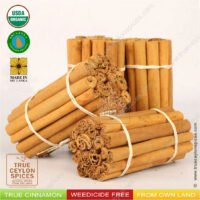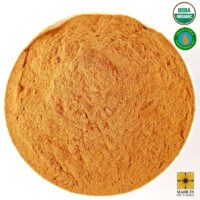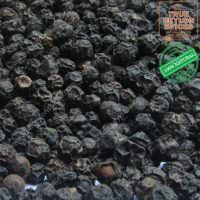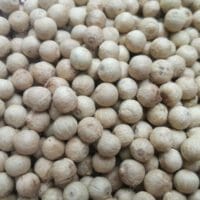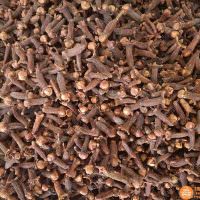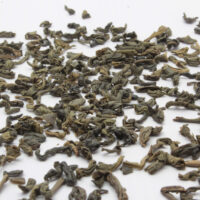Category Archives: Cinnamon
Ceylon Cinnamon Capsules – Making Consumption Easier
Cinnamon accounts for a multitude of products ranging from cinnamon capsules, ground cinnamon to chips, bark and oil and more importantly cinnamon is known for its native and unique form of quills. However, with the advancement of technology and the pharmaceutical industry, a very popular product in today’s international Cinnamon trade market is the Cinnamon capsule!
These capsules offer an easier and smarter way of adding Cinnamon to your diet. Due to low contents of Coumarin, regular use of Ceylon Cinnamon is not hazardous for human health unlike inferior brands such as Cassia. The usual ground Cinnamon or the loose powder might not provide you a uniform dose of Cinnamon as factors such as moisture content affect the amount of Cinnamon in one unit as it gets contaminated with the air. However, once you are consuming the capsule, if the vendor you picked is a reputed one, they usually test these factors before they encapsulate it to make sure that there will be a uniform supply of Cinnamon through each capsule. As appeared in ‘Diabetes Care’ a recent research experiment carried out by Dr. Alam Khan has shown that taking Cinnamon capsules reduce blood cholesterol levels ranging from 13%-26%.
However, there are certain things that have to be given attention when buying Cinnamon capsules. Be aware of the amount of Cinnamon each capsule enfolds because it will affect the due dosage of the capsules. The suggested serving size usually is 6g per day and is best advised to be taken with carbohydrate containing meals. Make sure that the capsule contains no additives or fillers and above all make very certain that what is encapsulated in it is Pure Ceylon Cinnamon because taking inferior brands such as Cassia as capsules regularly will have adverse impacts on your health.
Testimonials of type 2 Diabetes patients worldwide who have been consuming Cinnamon capsules bear evidence to the fact that it actually works and this might also be a reason for the wide popularity it gained shortly after its introduction to the market.
So add Pure Ceylon Cinnamon capsules in your daily diet to stay healthier in an easier, smarter and a less messy way; but natural intakes always recommended over supplements.
Tips to Buy Ceylon Cinnamon Online
Buy Ceylon cinnamon online with this tips will ensure you to get high quality Ceylon cinnamon comes from Sri Lanka.
Cinnamon is a spice recognized as the third most essential in the world following Pepper and Vanilla. Among the brands of Cinnamon, Ceylon Cinnamon is hailed with the title “true Cinnamon” for its distinctive and superior characteristics which have also made it the market leader in the international trade market of Cinnamon. In fact, Ceylon Cinnamon holds the trade monopoly of the global Cinnamon market, claiming for 80%-90% of global market share.
Ceylon Cinnamon is known for its unique sweet and aromatic flavour and its distinctive mild aroma which has caused it to be widely used in food and perfumery industries. Apart from that, buyers over the globe who are aware of the medicinal value of Ceylon Cinnamon opt to buy those instead of inferior brands of Cinnamon such as Cassia, regardless the latter being cheap and commonly available. Out of all its products, Ceylon Cinnamon quills are extremely popular and high demanding among the Cinnamon buyers around the globe for the form of these quills are unique and native to Sri-Lanka.
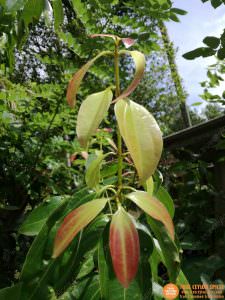
Cinnamon tender leaf – Home garden in Sri Lanka
When considering means to buy Ceylon Cinnamon; for a buyer, specially who is not a resident in Sri-Lanka, the safest and the smartest way of getting access to Pure Ceylon Cinnamon is to buy it online. If you ask why, it is because Cassia is being sold largely in the name of Ceylon Cinnamon at convention stores and other physical places that you might find in your locality selling Cinnamon. Even when you are buying Ceylon Cinnamon online, if you did not know how and what exactly to look for, chances are high that you might get mislead.
Therefore, we would like to give you some little tips which would help you get the true and pure Ceylon Cinnamon that you have been wanting to buy.
Buy it from Sri Lanka
First, since it is “Ceylon Cinnamon” which grows exclusively in Sri-Lanka, your online vendor shall be Sri-Lankan based. Some may say that they are grown in some parts of other countries, but then they can hardly be “Ceylon Cinnamon”. So check the vendor’s address to make sure that you are not about to buy Ceylon Cinnamon which is grown in some other part of the world which is yes, hypocritical!
Buy from a trusted seller
Secondly, pick a reputed online vendor. Since these e-Commerce platforms are very transparent, vendors are extremely conscious about their reputation and customer feedback and perception. Therefore, they would not risk their reputation and the client base for anything less than Ceylon Cinnamon if they say they are selling Ceylon Cinnamon. Some sites even offer customer testimonials and experiences which will help you out before you actually buy from them.
Check if seller has own plantation
Thirdly, check if the vendor has their own plantations. It doesn’t matter if the vendor is Sri-Lankan based if they don’t have their Cinnamon plantations and you don’t know from where the Cinnamon is coming from. Usually if they do have their own plantations, they would say that out loud so you are on the safe side.
Consider delivery time
As for the fourth tip, check the time it takes for your package of Ceylon Cinnamon to come to you after you have placed the order online. Shorter the time it takes, better and more fresh the Cinnamon you consume would be. Don’t forget to check the package details; air tight containers are essential when transporting and storing Cinnamon as contamination from air might alter its physical and chemical compositions. Last but not least, see if the vendors are boasting about some sort of certifications they might be having. Since getting such certifications is a long and a troublesome process and because they have cared enough to go through that trouble of achieving it, you might be even safer with such vendors.
So the next time you go buying Ceylon Cinnamon online, these tips would help making you foolproof and soon you will be experiencing that sweet and delicate flavour of Pure and true Ceylon Cinnamon which smells just heavenly. Happy online shopping then!
Cinnamon from Sri Lanka

Cropped cinnamon tree (Sri Lanka)
A world-renowned spice or condiment, there are at least four main types of cinnamon, but the two most well-known are: Cinnamomum cassia originating in China and Cinnamomum verum (also known as the old botanical name Cinnamomum Zeylanicum) the cinnamon originating in Sri Lanka (Ceylon).
The latter is the “real cinnamon”, the Cinnamomum verum which accounts for 7,500 to 10, 000 tons produced annually out of a total of 27,500 to 35,000 tons, the majority of which are of the Chinese variety, Cinnamomum cassia. Indonesia also produces about two-thirds of Cassia cinnamon. Sri Lanka produces 80% to 90% of the world’s supply of the ’real cinnamon’ while Seychelles and Madagascar account for most of the rest.
Why is Ceylon cinnamon referred to as the ‘real cinnamon’ while cassia is relegated to a subordinate role? Although these two varieties of cinnamon share some characteristics in terms of regulating blood sugar, inhibiting fungi and yeast, and are antimicrobial, they differ in terms of the presence of coumarin a strong blood thinning agent. While the coumarin content in Sri Lankan cinnamon is negligible, that in cassia cinnamon is 1200 times greater. Coumarin consumption over a long period of time has adverse effects on health such as causing liver and kidney damage. The Sri Lankan cinnamon is a far healthier option. The Sri Lankan cinnamon is proved to possess outstanding health benefits especially for controlling Type 2 diabetes, lowering high cholesterol, and fighting obesity.

Harvested cinnamon sticks ready to transport
The earliest known reference to Sri Lankan cinnamon was in Zakaria-al-Qazwini’s Athar al-bilad-wa-akhbar al-ibad (“Monument of Places and History of God’s Bondsmen”) circa 1270 followed by John of Montecorvino in a letter around 1292. However, it was the Portuguese conquest of the maritime provinces of Ceylon in the early sixteenth century that enabled them to hold a monopoly of the cinnamon trade for over a century. Since then, the world has taken notice of this invaluable spice. Before the Dutch had ousted the Portuguese from Ceylon completely in 1658, they had established a trading post and had taken control of the cinnamon trade by 1640. The Dutch East India Company no longer relied on harvesting cinnamon from the wild, but cultivated its own orchards of trees.
The Spaniards too, having conquered Philippines, cultivated Cinnamomum mindanaense in the island of Mindanao. This has some different from the Sri Lankan variety, and found its way to Mexico, and is commonly referred to as Canela. This cinnamon is often mixed with chocolate and is regarded mainly as a sweetener.
A cinnamon tree in Sri Lanka is grown for about three years before coppicing it. Coppicing means cutting the stem of the tree at ground level. When in the next year, a dozen or so shoots rise from the roots, these are the ones that are to be harvested. While the inner bark is still wet, the stems must be processed by scraping off the outer bark and loosening the inside. The outer bark is discarded. The inner bark is then cut into long rolls. These meter-long strips curl into rolls (quills) when dried. Four to six hours are needed in a ventilated, dry, and warm environment to get the best results in initial drying. If drying conditions are not optimal, one may need fumigation to get rid of pests. The resulting product is not regarded as premium quality unlike the non-fumigated bark. The bark is then keep for dry in a week and ready for export. Unlike the very hard and almost impossible to grind dark brown sticks of Cassia cinnamon, the Sri Lankan cinnamon is thin, smooth and tan brown in color.

Separated inner bark of Sri Lankan cinnamon
Ruth Tan (May 2015) describes its aroma in these terms. “When the (Sri Lankan cinnamon) packages (ground and sticks) were air-freighted to me, I immediately opened one up and took a sniff of the powder. WOW BANG! It was exactly like how others have described it! The aroma was sweet enough to make you fall in love with it immediately. Its pleasant fragrance was a heaven and earth difference from the harsh, pungent Cassia cinnamon…”
She also describes Ceylon cinnamon as ‘forming multiple layers when rolled up’ as against Cassia/Chinese cinnamon having a ‘thick bark that forms only a few layers when rolled up’.
The University of Ruhuna, Sri Lanka has pioneered research into developing mechanical devices not only to ensure the best results in cinnamon production, but also to ensure worker health and safety.
Some of the health benefits of Sri Lankan cinnamon are listed below.
- Reducing blood sugar levels – Research has shown that Cinnamaldehyde from Ceylon Cinnamon Bark Oil reduced plasma glucose concentration significantly (p<0.05) in a dose dependent manner (63.29%).
- Candida Yeast infections – Cinnamon oil was found to be effective against three strains of Candida. Candida albicans, Candida tropicalis, and Candida krusel.
- Stomach Bug/Flu – Cinnamon is one of the most effective and powerful antibacterial.
- Irritable Bowel Syndrome – As a digestive, cinnamon works against bloating, killing bacteria and healing infections.
- Cancer Prevention – Research has shown that Cinnamon oil is a promising solution in the treatment of Tumors, Gastric cancers and Melanomas. Another study found good results with leukemia and lymphoma cancer cells.
- Arthritis/Osteoporosis – Currently only evidence is from personal testimonials, but the presence of Manganese helps to validate this claim.
- Food Preservative – To preserve food without refrigerating use cinnamon to prevent bacterial growth.
- Memory and cognitive development – There is some evidence for increased alertness and concentration in regularly using cinnamon.
- Anti-oxidant – Cinnamon is one of the top seven anti-oxidants in the world. Reduces the formation of ‘free radicals’ that cause cancer.
- Lowering LDL cholesterol & triglycerides – A review in 2011 found that consumption of cinnamon is associated with a significant decrease in levels of total cholesterol LDL-C and triglyceride and an increase in HDL-C, (the good cholesterol).
- E-coli fighter – Because of its anti-microbial properties, cinnamon is effective against the spread of E-coli.
- Nutrients – One teaspoon of cinnamon powder has 0.33mg Manganese, 0.76mg Iron, and 24.56mg Calcium.
- Cold, Sore throat and Cough – Cinnamon tea, or cinnamon stick tea is said to stop an impending illness by increasing blood flow and improving blood oxygen levels.
- Alzheimer’s disease – University of Tel Aviv found sufficient evidence that cinnamon can delay the effects of five (5) aggressive strains of Alzheimer’s inducing genes.
Ceylon cinnamon is a unique and healthy spice than related varieties such as Cassia. Attached with a early name of the county Sri Lanka, this valuable spice known as ‘Ceylon cinnamon’ and you will get high quality Ceylon cinnamon from Sri Lanka.
Four Types of Cinnamon
Cinnamon is a valuable spice. Ceylon cinnamon rated as fourth most expensive spice in the world. There are few varieties of cinnamon sells in the international market under the title of ‘Cinnamon’. Following information will help you to get a idea to keep true cinnamon product in your cupboard.
01. Ceylon cinnamon

| Name | : | Ceylon cinnamon |
| Other names | : | True cinnamon, Pure cinnamon, Sri Lankan cinnamon, Mexican Cinnamon, Sweet cinnamon |
| Scientific name | : | Cinnamomum verum, Cinnamomum zeylanicum (old Latin name) |
| Family | : | Lauraceae |
| Growing countries | : | Native to Sri Lanka (80-90% of production), Seychelles, Madagascar, India |
| Major Buyer(s) | : | USA, Europe |
| Initial Products | : | Bark, Bark oil, Leaf oil |
| Flavor of bark | : | Mild Sweet |
| Pros. | : | Ultra low Coumarin levels, Softer and subtle taste |
| Cons. | : | Expensive |
02. Chinese cassia
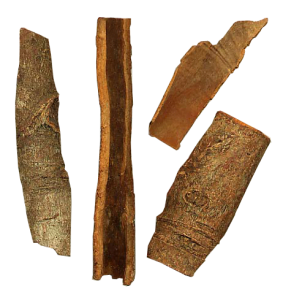
| Name | : | Chinese cassia |
| Other names | : | Cassia, Chinese cinnamon, Tung Hing |
| Scientific name | : | Cinnamomum aromaticum, Cinnamomum cassia (old Latin name) |
| Family | : | Lauraceae |
| Growing countries | : | China (Major production), Vietnam |
| Major Buyer(s) | : | UAE |
| Initial products | : | Bark, Oil |
| Flavor of bark | : | Strong |
| Pros. | : | Widely available, Cheap |
| Cons. | : | High Coumarin levels |
03. Vietnamese cassia
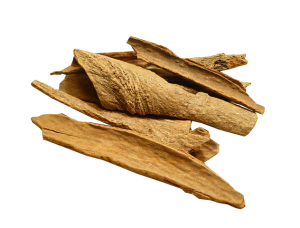
| Name | : | Vietnamese cassia |
| Other names | : | Saigon Cinnamon, Vietnamese cinnamon |
| Scientific name | : | Cinnamomum loureiroi |
| Family | : | Lauraceae |
| Growing countries | : | Vietnam |
| Major Buyer(s) | : | USA |
| Initial products | : | Bark, Oil |
| Flavor of bark | : | Much stronger |
| Pros. | : | Strong spicy cinnamon taste, High levels of oil content |
| Cons. | : | High Coumarin levels |
04. Indonesian cassia
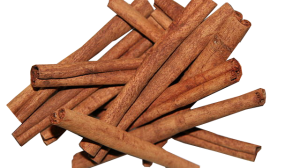
| Name | : | Indonesian cassia |
| Other names | : | Korintje Cinnamon, Padang cassia, Batavia cassia, Indonesian cinnamon |
| Scientific name | : | Cinnamomum burmannii |
| Family | : | Lauraceae |
| Growing countries | : | Indonesia (Native to Sumatera–Java region) |
| Major Buyer(s) | : | USA |
| Initial products | : | Bark, Oil |
| Flavor of bark | : | Strong |
| Pros. | : | Spicy Cinnamon flavor, Cheap |
| Cons. | : | High Coumarin levels |
Ceylon cinnamon is the most expensive and rare variety. Sri Lanka holds monopoly of international Cinnamon trade that supplying 80-90% of true cinnamon to the market. It widely use to produce many types of types of cinnamon liquor (whiskey), cinnamon rolls, cinnamon candy, cinnamon toast crunch in sweet production industry. Cinnamon gives range of health benefits including treatment for diabetes. Ceylon cinnamon is important for such as situation due to its ultra low coumarin content, a naturally occurring liver toxin in all Cinnamon which is harmful to human body in longer use.
10 Interesting Facts About Ceylon Cinnamon
Cinnamon is a big business and has been for thousands of years. It’s mentioned in places like the Bible and old Chinese texts and is still very popular today. While we may think of it as common, in ancient times it was rare but had widespread use in Asia, Europe, and Africa. Here are 10 interesting facts about cinnamon, one of the world’s favorite spices.
1. True Cinnamon
There are over 300 species of trees and shrubs in the genus Cinnamomum. Only a few species are grown commercially to produce cinnamon, but Ceylon cinnamon is the only kind to be thought of as true cinnamon—just look at its name: Cinnamomum verum. Its name stems from the latin word for true. While Ceylon cinnamon has a more delicate flavor, more people eat the Cassia variety because it’s cheaper and sold in most grocery stores.
2. Health Benefits
Despite our modern-day association between sweets and cinnamon, it actually has many health benefits. Ceylon cinnamon is especially healthy because it has the lowest levels of coumarin, a chemical that can damage the liver in kidneys in high doses. But with antimicrobial properties, the ability to reduce blood sugar levels, with a fair amount of antioxidants, cinnamon is definitely a healthy treat.
3. A Coveted Spice
Hundreds of years ago, cinnamon was worth more than its weight in silver and gold. But that changed as there became more suppliers and it flooded the market. Now, Cassia cinnamon can be found in the grocery store for just over a $1 per ounce.
4. Spurred Exploration
Cinnamon was brought to Europe and Africa by Arab traders over land, so the spice was incredibly limited and valuable. Savvy traders shrouded the source in secrecy, but many countries wanted to find and control the spice themselves. So much, it was one reason why Christopher Columbus began his westward exploration.
5. Harvesting
Ceylon cinnamon comes from the inner bark of a tree. The branches are cut off for harvesting and the bark peeled off. After peeling, the inner bark is rolled into quills, like a cigar, and hung up to dry before being sent to market.
6. Ancient Uses
As many as 4000 years ago, Egyptians used it during the embalming process and it was considered one of the most precious treasures. Because of its strong smell, cinnamon was also used as a perfume. Likewise, it was also common to spice meats with because, with no refrigerators, meat rotted faster and cinnamon prevented spoiling.
7. The Roman Emperor
Nero is famous for watching Rome burn. But after the death of his second wife, Poppaea, he called for a years worth of cinnamon to be burned in her honor. This might have been because he was mourning her death. It’s also possible he was responsible for her death, and it was a gesture of repentance.
8. Cinnamon’s Home
For all its worldwide and historical fame, Ceylon cinnamon is from the small island-nation Sri Lanka, formerly known as Ceylon. The country still produces about 90% of the world’s commercial Ceylon cinnamon.
9. A Bloody History
While Columbus never found cinnamon, eventually the Portuguese did at the beginning of the 16th century. They began colonization of the island, but it passed through Dutch and British control, too, and slaves were brought over from Africa. The colonizers fought amongst themselves and the local island kingdoms, which led to prolonged, vicious fighting over the small island.
10. Cinnamon Mythos
Because few knew where cinnamon came from, fantastic legends arose detailing its origin. In Rome, it was said that cinnamon came from Paradise. In Greece, stories suggested that giant birds brought cinnamon sticks to Arabia to built their nests on a mountain unclimbable by man. Or perhaps it came from the cinnamon country in present-day Ethiopia—or Somalia? These myths persisted for hundreds of years until its location was revealed.
Sampling of Cinnamon Quills
Definitions
Consignment: The quantity of packages of cinnamon quills submitted at one time and covered by a particular contract or shipping document. It may be composed of one or more lots.
Lot: All the packages in a single consignment of cinnamon quills pertaining to the same grade.
Defective package: Any package of cinnamon quills not conforming to any one or more of the requirements of this International Standard.
Number of packages to be taken for inspection
| Number of packages in the lot (N) | Number of packages to be taken (n) |
| 1 to 5 | All |
| 6 to 49 | 5 |
| 50 to 100 | 10% of the number of packages |
| Over 100 | The square root of the number of packages rounded to the nearest whole number. |
Testing of samples and criterion for conformity
All the packages taken for inspection shall be used individually to test for conformity with all the requirements given for this International Standard.
The lot shall be considered as conforming to the requirements of this International Standard if the number of defective packages in the sample tested is less than or equal to the corresponding acceptance number given below.
| Number of packages tested | Acceptance number |
| Up to 12 | 0 |
| 13 to 20 | 1 |
| 21 to 35 | 2 |
| 36 to 50 | 3 |
| 51 to 75 | 4 |
| Over 75 | 4 |
Related:
Specification for Cinnamon Whole or Ground
1. Scope and field of application
This International Standard applies for whole or ground (powdered) cinnamon produced using the bark of Cinnamomum verum/ Cinnamomum zeylanicum (Ceylon cinnamon).
2. Definitions
Cinnamon quills (full tubes): Scraped peel of the inner bark of mature cinnamon plant on shoots joined together by overlaps, the hollow of which has been filled with small pieces of the same peel and thereafter dried in sun after air curing. The product comes as sticks, known as cinnamon quills.
Cinnamon quillings (broken tubes): Broken pieces and splits of varying sizes of all grades of cinnamon quills.
Cinnamon featherings: Pieces of inner bark obtained by peeling and/or scraping the bark of small twigs and stalks of plantation cinnamon shoots which may include a quantity of chips as specified.
Cinnamon chips: Dried unpeelable bark of plantation cinnamon inclusive of the outer bark which has been obtained by beating or scraping the shoots.
Cinnamon powder: Ground cinnamon.
Whole cinnamon: All commercial forms of cinnamon except cinnamon powder.
3. Commercial grades
Quills: Table 1 – Classification of cinnamon quills, type Sri Lanka (Ceylon)

Quillings: Contains up to 3 % (m/m) of featherings and chips.* Foxing: the occurrence of reddish-brown patches on the surface of the quills, which may become dark brown
with time. Foxing can be (a) superficial (“malkorahedi”) or (b) heavy (“korahedi”). This sub-division is based on
the depth of the patches.
** Extent determined by visual examination.
*** Bale: a package of any one particular grade of quills wrapped with suitable material for export.
Featherings : Contains up to 5 % (m/m) of chips.
Chips : Chips shall consist of well dried and unpeelable cinnamon bark.
Ground cinnamon: The powder shall be constituted solely by the types of Quills, Quillings, Featherings & Chips. If there is a designation of origin, the powder shall be prepared exclusively from the barks concerned.
4. Requirements
Flavour: The flavour of cinnamon shall be fresh and characteristic of the spice of the origin concerned. It shall be free from foreign flavours, including mustiness.
Colour: Cinnamon powder shall be yellowish to reddish brown colour.
Freedom from moulds, insects, etc. Whole cinnamon shall be free from living insects, moulds, mites and insect remains, for example cocoons, and shall be practically free from dead insects, insect fragments and rodent contamination visible to the naked eye (corrected, if necessary, for abnormal vision), with such magnification as may be necessary in any particular case. If the magnification exceeds x10, this fact shall be stated in the test report.
In case of dispute, contamination in cinnamon powder shall be determined by the method described in ISO 1208.
Extraneous matter: The proportion of extraneous matter in whole cinnamon shall not exceed 1% (m/m) when determined by the method described in ISO 927. Extraneous matter comprises leaves, stems, chaff and other vegetable matter. The only mineral matter permitted is sand, earth and dust.
In the case of cinnamon quills, type Sri Lanka, take about 110 g of quills per bale of Continental grade and 230 g of quills per bale of Mexican or Hamburg grades, break them up and inspect the filling. Unscraped inner bark, scrapings, foreign matter, bark of wild cinnamon and other genera shall not be present.
Chemical requirements (Ceylon cinnamon): Table 2 – Chemical requirements
| Characteristic | Requirements | Method of test |
| Moisture content, % (m/m), max. | 12.0 | ISO 939 |
| Total ash, % (m/m) on dry basis, max. | 5.0 | ISO 928 |
| Acid insoluble ash, % (m/m) on dry basis, max. | 1.0 | ISO 930 |
| Volatile oils (ml/100 g) on dry basis, – Whole cinnamon | 1.0 (Tentative) | |
| Ground (powdered) cinnamon | 0.7 (Tentative) | ISO 6571 |
5. Sampling
Sample cinnamon quills by the method described Sampling of Cinnamon Quills. Sample all other forms of cinnamon in accordance with ISO 948.
6. Methods of test
Samples of whole cinnamon and cinnamon powder shall be tested for conformity with the requirements of the International Standard by the methods referred to in Table 2.
7. Packing and marking:
Table 2 – Packing requirements
| Whole cinnamon | |
| Packing | Whole cinnamon shall be packed in clean, sound and dry containers made of a material which does not affect the product or its flavour. Ceylon cinnamon packed in cylindrical bales of approx. 45 kg as general. |
| Marking (labelled on each container) | Name of the material, and the trade name or brand name & etc, Name and address of the manufacturer or packer, Batch or code number, Net mass, Grade of the material, Producing country & Any other marking required by the purchaser, such as year of harvest and date of packing (if known). |
| Cinnamon powder | |
| Packing | Cinnamon powder shall be packed in the same type of containers as specified for whole cinnamon. In addition, the containers shall protect the cinnamon powder against moisture and loss of volatile matter. |
| Marking (labelled on each container) | Name of the material, and the trade name or brand name and any, Name and address of the manufacturer or packer, Batch or code number, Net mass, Any other marking required by the purchaser, such as date of packing (if known). |
8. Transport:
The containers should be so handled and transported that they are protected from the rain, from the sun or other source of excessive heat, from objectionable odours, from contamination and mechanical spoilage.
The store room should be dry, free from objectionable odours, proofed against entry of insects and vermin and well protected from the sun, rain and excessive heat. The ventilation should be controlled.
9. References
- ISO 6539, Cinnamon (Cinnamomum zeylanicum Blume) — Specification
- ISO 927, Spices and condiments – Determination of extraneous matter content.
- ISO 928, Spices and condiments – Determination of total ash.
- ISO 930, Spices and condiments – Determination of acid insoluble ash.
- ISO 939, Spices and condiments – Determination of moisture content – Entrainment method.
- ISO 948, Spices and condiments – Sampling.
- ISO 1208, Ground spices – Determination of filth (Reference method).
- ISO 2825, Spices and condiments – Preparation of a ground sample for analysis.
- ISO 6571, Spices and condiments – Determination of volatile oil content.
Where True Cinnamon Comes from?
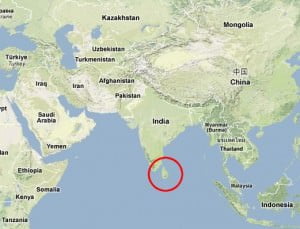 Are you sure you know where cinnamon comes from? Of course, it’s a spice we use very often, but we don’t usually know much about where it grows and how it comes to us. Cinnamon is one of the spices that is so useful that we often just take it for granted. We all probably have a jar of ground cinnamon somewhere in our kitchen cupboards. We use it almost everywhere: in desserts as well as in savory dishes. Many of us know that we can use it in our beauty routine and that it may even have health benefits.
Are you sure you know where cinnamon comes from? Of course, it’s a spice we use very often, but we don’t usually know much about where it grows and how it comes to us. Cinnamon is one of the spices that is so useful that we often just take it for granted. We all probably have a jar of ground cinnamon somewhere in our kitchen cupboards. We use it almost everywhere: in desserts as well as in savory dishes. Many of us know that we can use it in our beauty routine and that it may even have health benefits.
Apparently, we use cinnamon a lot, but we are still not quite sure about where we get it from. So, where does it come from? In ancient times, the source of cinnamon was kept a secret. It was so precious that Arabs invented amazing stories of giant birds which made their nests from the mysterious cinnamon sticks and guarded them, so that people risked their lives if they wanted to have them. Many of us are still not familiar with the source of cinnamon.
“Ceylon cinnamon” or “true cinnamon” (Cinnamomum verum) comes from the inside layer of bark from a number of various evergreen trees originating from Sri Lanka, or as it used to be called, Ceylon. First, the outer bark of the trees is shaven off, and then the inside bark, which is actually the cinnamon layer. After that the cinnamon is dried for further use. As it is drying, it naturally curls up and forms so called “quills” which are crushed into powder or cut into sticks.
Why are we talking about “true cinnamon”? It’s because the content of the jar in your kitchen is most likely something else – similar spice closely related to cinnamon which is called cassia. There are a few types of cassia: Chinese cinnamon, Indonesian cinnamon and Vietnamese cinnamon. We usually consider them as the same.
How can we tell the difference? Ceylon true cinnamon has a mild, delicate and more complex flavour, and it is more expensive. Its flavour is ideal if we want just a supporting role of the spice in our dishes. Most of it is still produced in Sri Lanka, and it is popular for baking and flavoring favourite drinks such as coffee or hot chocolate.
However, many people don’t want the mildness, and that’s why cassia is also popular. Cassia is much sweeter and spicier because it has a higher oil content. Cassia sticks are hard and they consist of the outer and inner bark. Certainly it is more suitable if you want a dominating flavour.
Be careful! There is one critical difference between the two types of cinnamon. Cassia cinnamon contains high levels of coumarin, a naturally occurring toxin which might damage the liver if consumed in high doses. It was also proved to be cancer-causing in rodents. On the other hand, Ceylon cinnamon contains only traces of coumarin.
While the first traders kept its source a mystery, today we know that Cinnamon comes from the Island of Sri Lanka which is the true home of Cinnamon.




